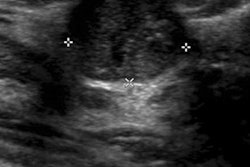Researchers at MD Anderson Cancer Center examined the incidence and timing of recurrent breast cancer according to tumor type in women with a personal history of the disease. Dr. Ana Paula Benveniste and colleagues conducted a retrospective database review of 212 women diagnosed with a second breast cancer between January 2006 and December 2010.
The team analyzed each woman's histopathology, identifying tumor biomarker status (estrogen receptor, progesterone receptor, and human epidermal growth factor receptor 2 [HER2]), the imaging features of the second cancer, and the time between the two cancer occurrences.
Benveniste's group found that second breast cancers appeared sooner in patients with triple-negative primary breast cancer, compared with women with estrogen-receptor-positive primary cancer. But the team also found that in all groups, almost all of the second breast cancers were evident by 10 years of follow-up -- leading the researchers to conclude that women with a personal history of breast cancer can return to a protocol of screening mammograms 10 years after their initial cancer diagnosis.



















